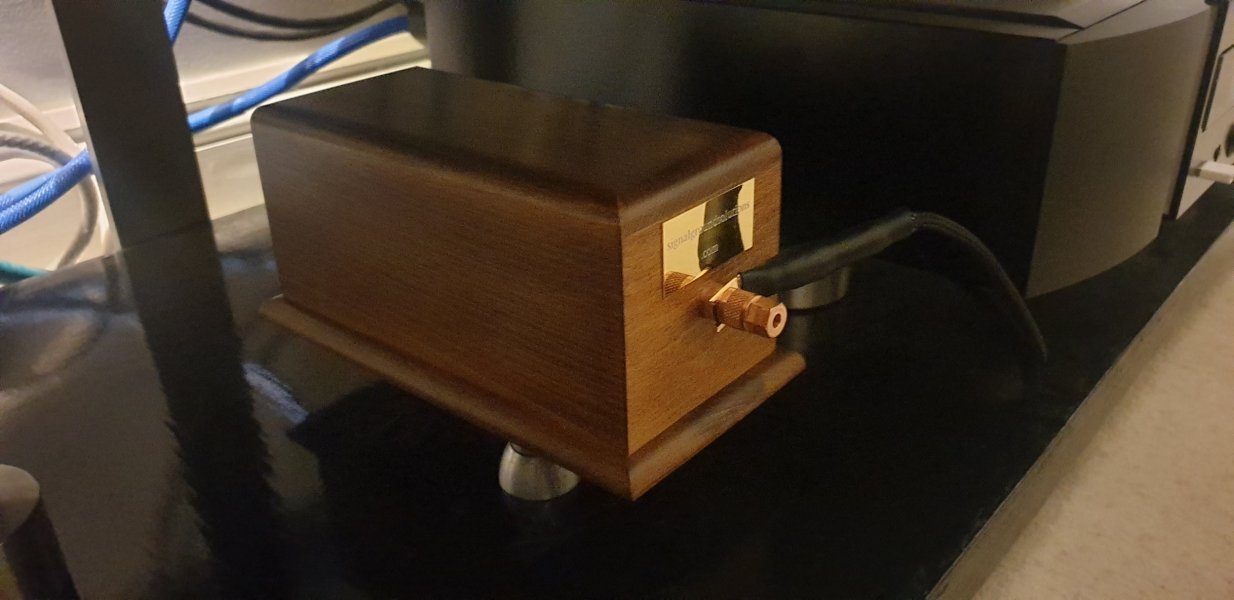Has anyone tried one of the grounding boxes from Signal Ground Solutions? They appear to be the same design as Entreq but relatively inexpensive by comparison.
Have had an SGS1 signature in my system for the past few weeks, very impressed
The story began some years back when I had the opportunity to try a Tripoint Troy SE in my system. I was surprised at the fundamental difference it made, a level of distortion disappeared allowing the system to relax and present in a more natural, realistic manner. It was outside my budget but left an impression.
I dabbled with other systems over the years, Entreq and the like but didn't feel they offered more than tweaks to the sound.
My system has matured over the years and another opportunity arose to try the Troy SE last summer. Again it lifted the system, in particular on the digital side, taking digital from also ran compared to my analog chain to acceptable, enjoyable even. With the Troy in the system I was listening to more digital than I have for years. While outside budget for now I began to contemplate a purchase.
While researching I came across SGS. Modestly priced and at least one favourable comparison with a Tripoint system so I decided to give the 1 signature a try.
Initially, as per Tripoint, I tried chassis grounding, one cable to the dac. There was certainly a difference, greater resolution but perhaps the system seemed a little tipped up, slight emphasis on the higher frequencies but overall a small step in the right direction toward the analogue. This tallied with expectation, I mean it's a vastly less expensive than Tripoint.
There wasn't much to speak of chassis grounding the amp.
SGS were clear that different components react in different ways and it's always worth trying the chassis ground and then signal to see which has the greater effect. Signal ground next, dac first.
Wow, attaching the ground cable to a spare RCA output had an immediate impact. I would contend every bit as much of an effect as running a single ground cable from the dac to the Troy SE (as I remember and of course my system dependent).
Importantly digital now delivers and I now play CDs and stream for pleasure rather than just exploring or playing a disc I don't have on vinyl. The analog is still a step up, a more visceral experience but it benefits from grounding also just not to the same degree as the digital. Given the single connection I use it on the power supply for the phonostage. I notice a greater sense of a vocalists inflexion, more tuneful bass, a slightly more solid sense of presence and energy.
The SGS1 sig is toward the lower tier of their product portfolio, they claim that models further up the range, still modestly priced by comparison to the competition deliver more of the same. One of these days I expect I'll investigate further.
I popped over to UK Paul with the box a couple of weeks back, some of the results were very surprising. Attaching the the ground cable clip to the metal support for a tonearm had an audible effect, there was even a small audible click sound via the speakers as the connection was made.
Perhaps Paul will chime in with his thoughts.








